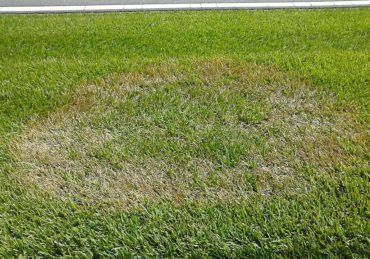Planting flower bulbs in the fall is an excellent way to ensure a vibrant and colorful garden in the spring. As the colder months pass, the bulbs lie dormant, preparing to burst into blooms as soon asthe warmer weather arrives. By selecting a variety of bulbs that bloom at different times, you can enjoy continuous color from early spring to late spring. Early bloomers like crocuses and snowdrops can lead the way, followed by mid-season favorites such as tulips and daffodils, and later bloomers like alliums and irises, extending the beauty of your garden over several weeks.
Proper soil preparation is key to successful bulb planting. Most flower bulbs prefer well-drained soil with added organic matter, such as compose, to encourage healthy root development. Digging holes at the appropriate depth for each bulb type and spacing them correctly ensures they have room to grow and spread over time.
Once planted, bulbs require minimal maintenance. Aside from occasional watering during dry spells and adding mulch for protection, they will return year after year, providing an effortless source of long-term beauty. This ease of care makes fall bulb planting a great investment for gardeners looking to enjoy an array of stunning blooms with little effort.
Why Fall is the Best Time to Plant Spring Bulbs
Planting flower bulbs in the fall gives them a crucial period to establish strong roots before the winter freeze. As temperatures cool but the soil remains workable, bulbs take advantage of this time to grow their roots deep into the ground. This early root development helps anchor the bulbs and prepares them to absorb nutrients and water, giving them a head start for the spring season.
During the winter months, the bulbs enter a dormant phase. This dormancy is essential, allowing the bulbs to conserve energy and avoid the stress of harsh winter conditions. The cold winter period also serves to trigger the natural growth cycle, signaling to the bulbs when to sprout as temperatures rise in the spring. This process ensures that, once spring arrives, the bulbs are ready to burst into healthy, vigorous growth, leading to strong stems, vibrant flowers, and a longer blooming season.
Soil Preparation for Successful Bulb Growth
Well-drained soil is essential for healthy bulbs, as it prevents water from pooling around the roots, which can lead to rot and disease. Bulbs thrive in soil that allows water to flow through easily while retaining enough moisture to support root development. To improve drainage, consider adding organic matter such as compost, leaf mold, or well-rotted manure, which helps break up heavy or compacted soil. For particularly clay-heavy soils, mixing in sand or grit can further enhance drainage. These amendments not only prevent water logging but also enrich the soil with nutrients, promoting strong root establishment. Healthy roots support vibrant, long-lasting blooms, making proper soil preparation one of the key steps to a successful and thriving spring garden.
Best Bulbs to Plant in Fall for Early Spring Blooms
Early-blooming flower bulbs are a fantastic way to bring life and color to your garden as soon as the cold winter days start to fade. These hardy bulbs are among the first signs of spring, offering a welcome splash of brightness when much of the landscape is still waking up. Crocuses are a favorite, with their delicate petals emerging even through late snow. Their vibrant purple, white, and yellow blooms create a cheerful across the garden. Snowdrops, another early riser, are renowned for their graceful white bell-shaped flowers that bloom as early as February in some climates.
Daffodils, particularly miniature varieties, also make an appearance early in the season, their sunny yellow blooms heralding the warmer days ahead. Hyacinths, with their fragrant, dense flower clusters, bloom slightly later but still qualify as early spring bloomers, adding rich fragrance and color. These early bulbs are ideal for planting in clusters to create a striking visual effect.
By planting a variety of early spring bulbs, you can jumpstart your garden with a succession of blooms that keep the landscape colorful and inviting even before the peak of the season. Their resilience and beauty make them an essential addition to any garden.
Snowdrops
Snowdrops are delicate, early-blooming flowers that often emerge as one of the first signs of spring, even pushing through late snow. Their nodding, white, bell-shaped blooms provide a graceful touch to the garden, symbolizing renewal and hope after winter. Snowdrops are low-maintenance and hardy, thriving in partial shade and well-drained soil. Their early blooms attract pollinators and add a subtle beauty to borders, woodland gardens, and lawns.
Crocus
Crocus flowers are vibrant, early spring bloomers that often appear as one of the first signs of the season, sometimes even through snow. Their cup-shaped blooms come in shades of purple, yellow, and white, adding a cheerful burst of color to the garden. Crocuses are low-maintenance, drought-tolerant, and attract early pollinators. These hardy flowers thrive in well-drained soil and can be planted in boarders, rock gardens, or naturalized in lawns.
Dwarf Iris
Dwarf iris flowers are charming, early spring bloomers that bring vibrant color to gardens as winter fades. These petite irises typically feature striking blue, purple, or yellow petals and bloom just above the ground, creating a delightful carpet of color. Dwarf irises thrive in well-drained soil and full sun to partial shade, making them versatile for various garden settings. Their compact size makes them perfect for borders or rock gardens, attracting pollinators and enhancing seasonal beauty.
Mid-Spring Blooming Bulbs for Continued Color
Mid-spring is a delightful time in the garden, characterized by a vibrant display of colorful bulbs that provide an extended bloom period. Tulips are among the most popular choices, with their wide variety of colors, shapes, and sizes. They flourish in full sun and well-drained soil, blooming from mid-April to early May, creating a striking visual impact. Daffodils also shine during this time, offering cheerful yellow or white blooms that not only brighten the landscape but are also deer-resistant. Another great option is the hyacinth, known for its dense, fragrant flower spikes that bloom in shades of pink, purple, blue and white. Their sweet scent and vibrant colors make them ideal for borders or containers.
Tulips
Tulips are iconic mid-spring flowers that burst into bloom from April to May, brining vibrant colors and diverse shapes to the garden. With a vast array of hues, from bold reds to soft pastels, they create stunning displays in borders and beds. Tulips thrive in well-drained soil and full sun, making them low-maintenance. Their long-lasting blooms attract pollinators, while their ability to naturalize adds beauty year after year.
Hyacinths
Hyacinths are fragrant mid-spring flowers that bloom from April to May, known for their dense clusters of colorful blooms in shades of pink, purple, blue and white. Their captivating scent adds a delightful aroma to gardens and patios. Thriving in well-drained soil and full sun, hyacinths are relatively low-maintenance. They attract pollinators like bees or butterflies, making them a beneficial addition to any landscape while providing a stunning visual display.
Daffodils
Daffodils are cheerful mid-spring flowers that typically bloom from March to May, showcasing their iconic yellow and white trumpet-shaped blooms. Renowned for their resilience, they thrive in well-drained soil and full sun, making them easy to grow in various garden settings. Daffodils are deer-resistant, adding a layer of protection against unwanted visitors. Their bright, sunny appearance not only enhances the landscape but also attracts early pollinators, promoting biodiversity in the garden.
Late Spring Bulbs to Extend Your Garden’s Beauty
Late spring and early summer bulbs provide stunning color and texture to the garden as the seasons transitions, keeping the landscape vibrant. Alliums are among the most striking late-season bloomers. Their tall, sturdy stems topped with large, globe-shaped clusters of purple or white flowers make a bold statement. Not only are they beautiful, but alliums also attract pollinators like bees and butterflies while being deer-resistant, making them an excellent low-maintenance option.
Peonies are another fantastic choice for late-season blooms. Known for their large, lush, and fragrant flowers, peonies bloom in various shades of pink, white, red, and coral. These perennials thrive in well-drained soil and full sun, and once established, they can return year after year with minimal care. Their long-lasting flowers are perfect for cutting and enjoying indoors, adding to their appeal.
Foxtail lilies, or Eremurus, are a unique addition with their tall, spiky flower talks that can reach up to 6 feet high. These dramatic blooms, available in shades of yellow, orange, and pink, create vertical interest and a striking focal point in the garden. Like other late bloomers, foxtail lilies attract pollinators and add a final flourish of color as spring transitions into summer.
Alliums
Alliums are striking late-spring flowers known for their tall stems topped with globe-shaped clusters of purple, punk, or white blooms. Blooming from May to June, they add architectural interest and bold color to the garden. Alliums are low-maintenance, deer resistant, and attract beneficial pollinators like bees and butterflies. Their unique appearance makes them perfect for garden borders, providing vertical height and a stunning visual display late into the season.
Peonies
Peonies are stunning late-spring flowers, blooming from May to June, known for their large, fragrant, and lush blossoms in shades of pink, white, red, and coral. These long-lived perennials thrive in well-drained soil and full sun, returning year after year with minimal care. Their showy, layered flowers are perfect for cutting, adding elegance indoors. Peonies also attract pollinators like bees, making them a beautiful and beneficial addition to any garden.
Foxtail Lily
Foxtail lilies, or Eremurus, are dramatic late-spring to early summer flowers, known for their tall, spiky flower stalks that can reach up to 6 feet. Blooming in shades of yellow, orange, and pink, they add vertical interest and a striking focal point to gardens. These sun-loving, drought-tolerant plants attract pollinators like bees and butterflies. Their towering blooms provide stunning color late in the season, making them ideal for creating dynamic garden displays.
How to Plant Bulbs in Fall for Maximum Success
Planting flower bulbs is a simple yet rewarding process that ensures beautiful blooms in the coming seasons. Begin by selecting healthy bulbs and preparing well-drained soil, as this is crucial for preventing rot. Dig holes based on the bulb size; a general rule is to plant bulbs at a depth of 2-3 times their height. For example, larger bulbs like tulips or daffodils should be planted about 6-8 inches deep, while smaller bulbs like crocuses and snowdrops need around 3-4 inches.
Next, space the bulbs according to their size. Larger bulbs require 4-6 inches between each, while smaller bulbs can be placed closer, about 2-3 inches apart. Place the bulb with the pointed end facing upward and the flat or root side down. Cover the bulbs with soil and gently tamp it down to eliminate air pockets.
Water the bulbs after planting to help them settle and establish roots before winter. Finally, add a layer of mulch for insulation, especially in colder climates. This helps protect the bulbs during the winter and promotes healthier blooms in the spring.
How Deep Should You Plant Bulbs?
When planting bulbs, the depth is crucial for their growth and success. A general guideline is to plant bulbs at a depth of 2-3 times their height. Flower bulbs for tulips and daffodils are larger and should be planted 6-8 inches deep, while smaller bulbs like crocuses and snowdrops only need to be 3-4 inches deep. Proper depth is essential because it ensures bulbs are protected from temperature fluctuations and moisture loss. Planting too shallow may expose bulbs to frost damage or drying out, while planting too deep can delay or hinder sprouting. Adequate depth helps establish strong roots, anchoring the bulb and allowing it to absorb nutrients and water efficiently, resulting in healthier plants and more vibrant blooms.
Caring for Bulbs After Planting
After planting bulbs, mulching and proper watering a key to helping them thrive through the winter, as the bulbs need the extra protection. Begin by thoroughly watering the bulbs to encourage root establishment before the ground freezes. This helps them settle into the soil and absorb moisture needed to winter dormancy. Next, apply a 2-3 inch layer of mulch, such as shredded leaves, straw, or bark, to insulate the soil and regulate temperature. Mulch prevents the ground from freezing and thawing too quickly, which can dislodge bulbs and expose them to frost damage. Adding a protective mulch layer also helps retain moisture and reduces the need for frequent watering during dry winter months. By protecting the bulbs from harsh conditions and temperature swings, mulching ensures they emerge healthy once spring arrives.
Bulbs that Naturalize for Perennial Blooms
Naturalizing bulbs is a gardening technique that allows certain types of bulbs to return year after year with little maintenance, gradually multiplying and spreading across a landscape. Unlike annual bulbs that need replanting, naturalizing bulbs are perennial and thrive in conditions similar to their natural habitat. Once planted, they adapt to the environment, grow, and bloom annually with minimal intervention. Common naturalizing bulbs include crocuses, daffodil bulbs, and snowdrops.
To successfully naturalize bulbs, choose well-drained soil and plant them in an area where they can remain undisturbed. Bulbs should be planted at the appropriate depth, and once established, they will multiply by creating new bulbs underground. Over time, they spread naturally, filling spaces with beautiful, reliable blooms.
One of the key benefits of naturalizing is the low maintenance requires. Apart from occasional watering during dry periods and adding mulch for winter protection, these bulbs generally require no fertilizing or replanting. Their ability to return each year not only enhances the garden’s beauty but also reduces the need for annual planting, making them an ideal option for gardeners looking for long-term, effortless color in their landscape.
Daffodils for Naturalizing
Daffodils are excellent for naturalizing because they are hardy, perennial bulbs that multiple easily and return year after year. They thrive in well-drained soil and can adapt to various conditions, making them perfect for borders, meadows, or woodland areas. To encourage spreading, plant daffodils in groups and leave the foliage to die back naturally after blooming, allowing the bulbs to store energy for future growth. Their deer-resistant nature also adds to their durability.
Crocus for Naturalizing
Crocuses are ideal for naturalizing due to their resilience and ability to multiply easily, creating colorful carpets in lawns or garden borders year after year. These small, early-spring bloomers thrive in well-drained soil and sunny spots. Plants crocus bulbs in groups for a natural, scattered effect. Once planted, they require minimal care, returning each spring. Avoid mowing the lawn until the foliage has died back to ensure the bulbs store enough energy for next year’s bloom.
Adding Biodiversity to Your Garden with Spring Bulbs
Planting bulbs can significantly enhance garden biodiversity, attract pollinators, and promote a healthier ecosystem. Many spring-blooming bulbs, such as crocuses, tulips, alliums, and daffodils, provide essential nectar and pollen for pollinators like bees, butterflies, and other beneficial insects when few other plants are flowering. This early-season food source helps sustain pollinators during critical times of the year.
Increased plant diversity, facilitated by bulbs, encourages a wider range of wildlife, supporting a balanced ecosystem. For instance, bulbs that naturalize, like crocuses or snowdrops, not only beautify the landscape but also create habitats for insect and microorganisms. The presence, in turn, benefits other plants by increasing pollination rates, resulting in healthier plant communities.
Furthermore, bulbs are generally low-maintenance and resistant to pests, reducing the need for chemical inputs. This contributes to a more sustainable gardening approach, where healthier soil, diverse plant life, and vibrant pollinator populations all work together to create a thriving ecosystem.
Where to Buy the Best Fall Bulbs for Spring Blooms
When purchasing bulbs, it’s crucial to choose reputable sources to ensure you’re getting healthy, disease-free bulbs that will thrive in your garden. Reliable online retailers like Breck’s, Dutch Grown, and John Scheepers are know for their quality bulbs and wide selection. In-person, local garden centers or nurseries often provide expert advice and a chance to inspect bulbs before buying. Look for firm, unblemished bulbs with no signs of mold, soft spots, or rot.
Buying from trusted sources ensures the bulbs are properly stored and disease-free, increasing their chances of successful growth. Avoid bargain or damaged bulbs, as they may be diseased or underdeveloped. By selecting healthy bulbs from reliable suppliers, you’re setting up your garden for vibrant, long-lasting blooms.




